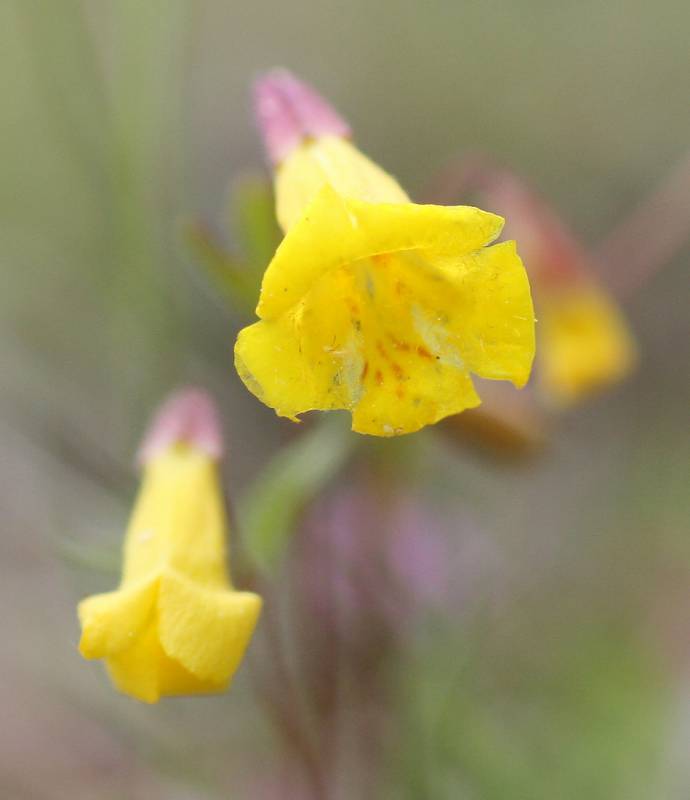Erythranthe grandis
Erythranthe pulsiferae
large monkey-flower
candelabrum monkey-flower, Pulsifer's monkey-flower
Leaves basal and cauline, basal leaves generally not persistent;
petioles 10-80 mm, becoming reduced distally;
blade ovate to broadly elliptic, 25-60 mm long and 20-40 cm broad, palmate or nearly pinnate venation with 5-7 veins, base truncate to nearly cruneate to nearly cordate, margins crenulate to toothed, occasionally sublyrate near base, apex rounded to obtuse, surfaces of distalmost leaves hairy as stems.
Leaves basal and cauline;
petioles 2-9 mm with 3 distinct veins and 2 wings;
blade elliptic-oblong to ovate or oblanceolate, 3-14 mm long and 2-9 mm broad, palmate venation with 3 veins, base cuneate to attenuate, margins finely toothed to entire, apex acute to obtuse, surfaces glandular-hairy as stems.
Inflorescence racemose, bracteate, flowers 8-26; fruiting pedicels 10-35 mm, hairy as stems;
calyx straight-erect or nodding at 45-100 degrees, ovate to bell-shaped, inflated, compressed along sagittal plane, 15-22 mm, hairy as stems, throat closing;
corollas yellow with red spots inside, symmetric bilaterally, bilabiate;
tube-throat widely funnel-shaped, 16-24 mm, protruding 10-15 mm beyond calyx margin, limb widely expanded;
styles hirtellous;
anthers not protruding, glabrous.
Axillary flowers 1-9, emerging from mid-stem to distal nodes; fruiting pedicels horizontally spreading-curved, 12-38 mm, glandular-hairy as stems;
calyx cylindric, somewhat inflated, 7-10 mm, margins toothed or lobed, glandular-hairy as stems, lobes pronounced, erect;
corollas yellow, tube-throat, palate ridges, lower limb yellow to light yellow, lower limb with red dots or not, symmetric bilaterally, barely bilabiate;
tube-throat funnel-shaped and 6-9 mm, protruding beyond calyx margin;
lobes widely obovate to somewhat orbicular, apex rounded;
styles glabrous;
anthers not protruding, glabrous.
Capsules 8-12 mm, included.
Capsules 5-8 mm, included.
Erythranthe grandis
Erythranthe pulsiferae
- Local floras:
CA,
OR,
WA
- Local Web sites:
CalFlora,
CalPhotos,
Flora NW,
PNW Herbaria
WildflowerSearch
iNaturalist (observations)
- LBJ Wildflower Center
- SEINet
- Plants of the World Online
- Encyclopedia of Life
- Wikipedia
- Google Image Search
- Local floras:
CA,
OR,
WA
- Local Web sites:
CalFlora,
CalPhotos,
Flora NW,
PNW Herbaria
WildflowerSearch
iNaturalist (observations)
- LBJ Wildflower Center
- SEINet
- Plants of the World Online
- Encyclopedia of Life
- Wikipedia
- Google Image Search



